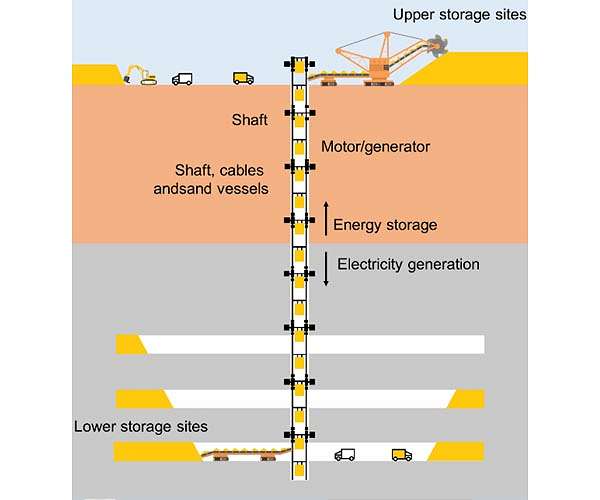Why energy storage is key to global renewable energy goals
G7 environment ministers pledged on Tuesday to ramp up production and deployment of battery storage technology, a key component for increasing renewable energy and combating climate change.
Here you can read how and why batteries play a crucial role in the energy transition:
– Growing demand –
Batteries have played a central role in the rise of electric vehicles (EVs), but are also critical for wind and solar energy due to the intermittent nature of these energy sources.
Excess electricity must be stored in batteries to stabilize distribution, regardless of peaks in demand or interruptions in supply at night or in low wind conditions.
Battery deployment in the energy sector increased by more than 130 percent last year compared to 2022, according to a report released last week by the International Energy Agency (IEA).
The main markets are China, the European Union and the United States.
Britain, South Korea, Japan and developing countries in Africa are following closely, where solar energy and storage technology are seen as the gateway to energy access.
– Sixfold goal –
To triple global renewable energy capacity by 2030 – a target set at the UN climate conference in December – the IEA says a sixfold increase in battery storage will be necessary.
Clean energy is essential to reduce emissions from the combustion of fossil fuels and to maintain the international goal of limiting global warming to 1.5 degrees Celsius above pre-industrial levels.
The total storage capacity needed to achieve this goal is estimated at 1,500 gigawatts in 2030.
Of this, 1,200 GW will have to be supplied by batteries.
– Cost challenges –
In less than 15 years, battery costs have fallen by 90 percent.
“The combination of solar energy and batteries is competitive with new coal-fired power stations in India today. And in the coming years it will be cheaper than new coal in China and gas-fired power in the United States,” said IEA chief Fatih Birol. said last week.
“But the pace is still not fast enough to achieve our climate change and energy security goals.”
Costs will have to fall further, he said, calling for diversification of supply chains.
Most batteries are currently produced by China.
But according to the IEA, about 40 percent of planned battery production projects are in the United States and Europe.
If these projects are realized, they would be almost sufficient to meet the needs of those countries.
– Metal shops –
Another thorny issue is the availability of critical metals such as lithium and cobalt, which are essential for battery production.
Experts say the development of chemical alternatives could complement the dominant lithium-ion technology.
“The transition in technology will reduce the amount of lithium required,” said Brent Wanner, head of the IEA’s energy sector unit, adding: “This includes the shift to sodium-ion batteries.”
After 2030, solid-state batteries with high density and longer lifespan are expected to be commercially available.
There are other storage options, although not as widely applicable or available as batteries.
Pumped storage hydropower has long been used in the hydroelectric sector.
The conversion of electricity into hydrogen, which can be stored and transported, is a new technology that is expected to become more readily available.
– To be flexible –
Renewable energy is not completely dependent on storage and measures can be taken to improve the flexibility of production to meet demand.
The business community and governments are preparing for the transition.
The European Union’s Energy Regulators Agency in September called on member states to assess their “flexibility potential” based on estimates that renewable energy sources will need to double by 2030.
Such an increase requires greater ‘flexibility’ in the networks, meaning that energy can be stored and distributed consistently, despite fluctuating production and demand.
The G7 said on Tuesday that they would not only support greater production and use of battery storage, but also promote technological advances in the sector and grid infrastructure.


